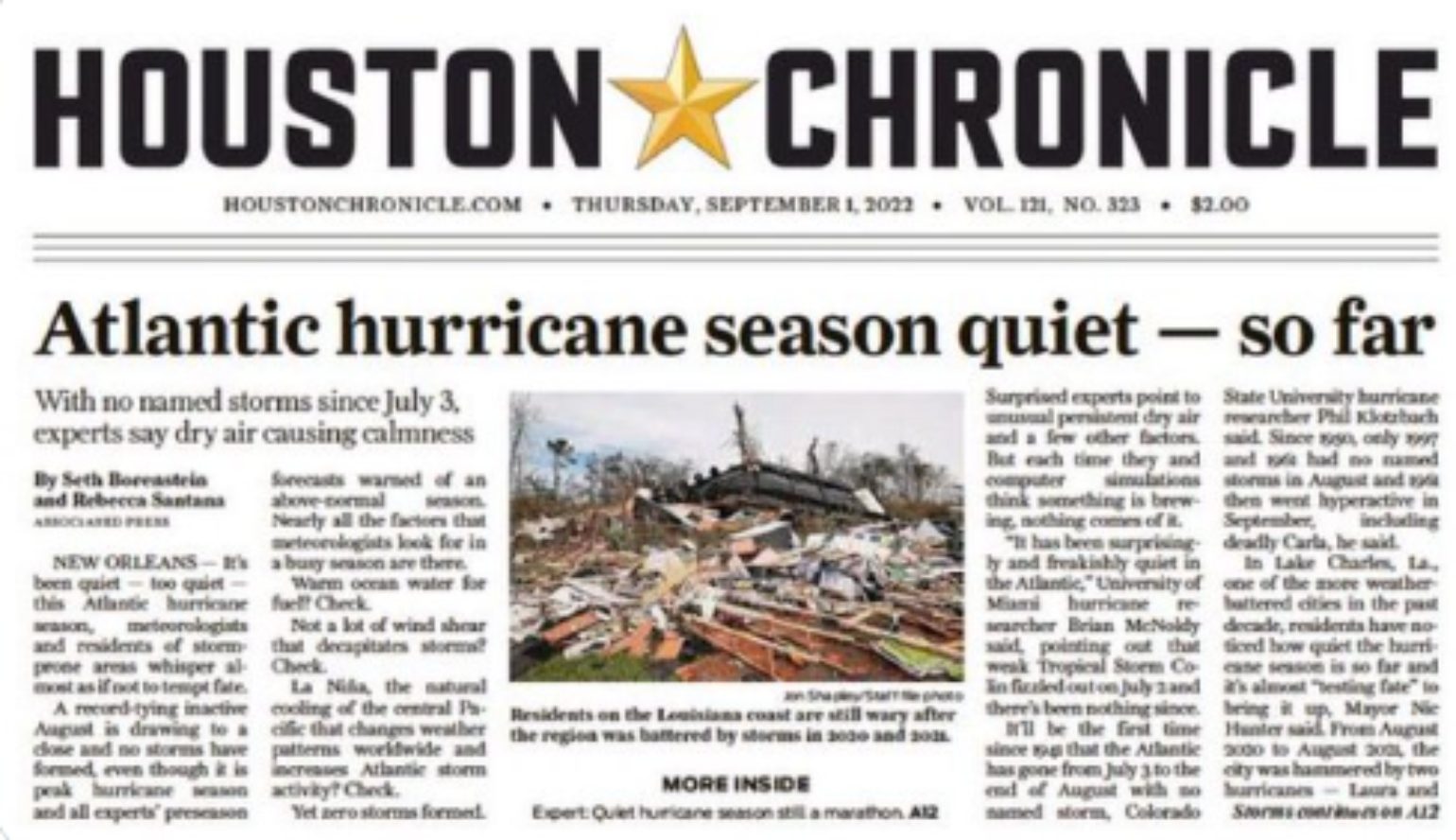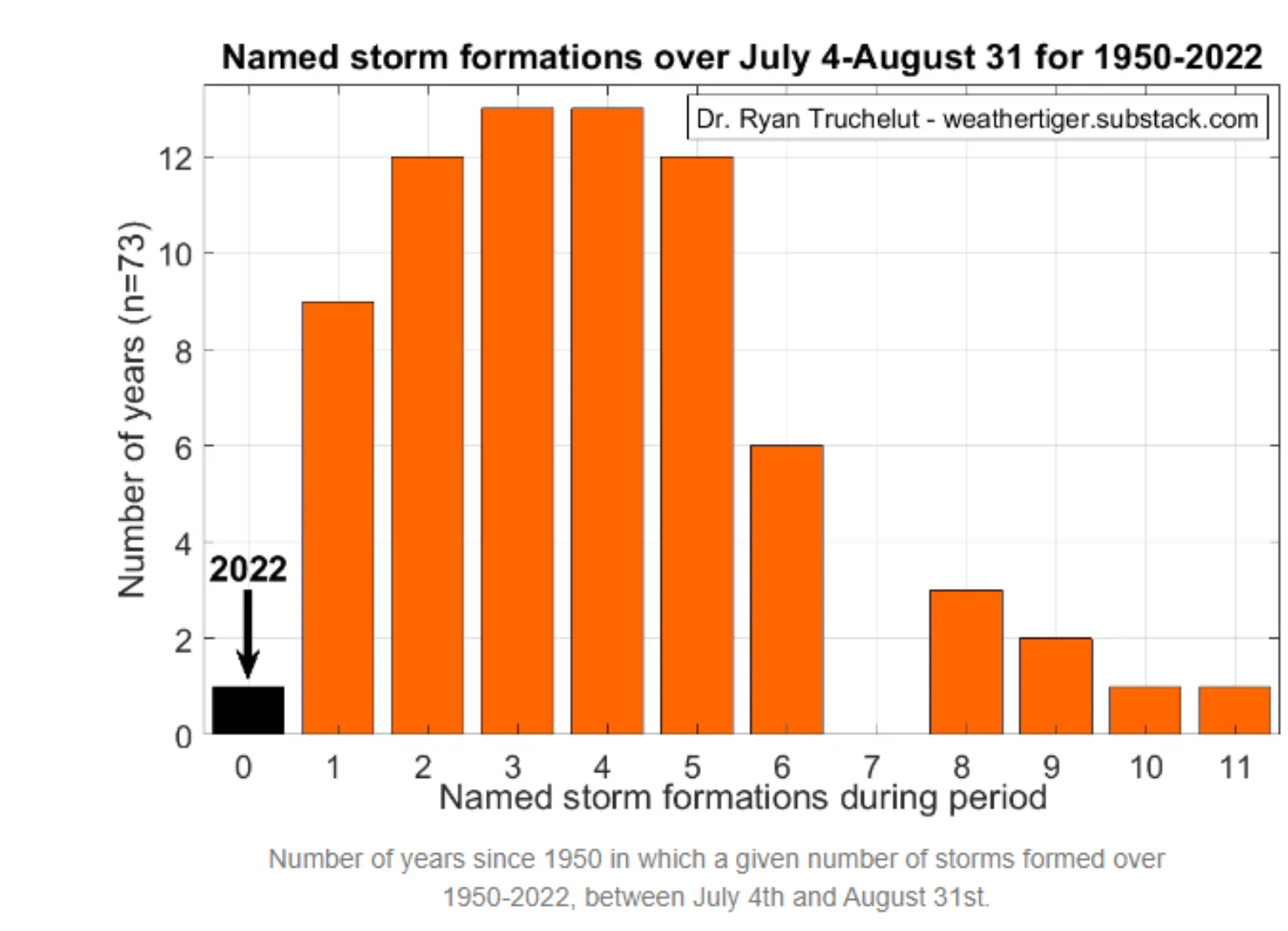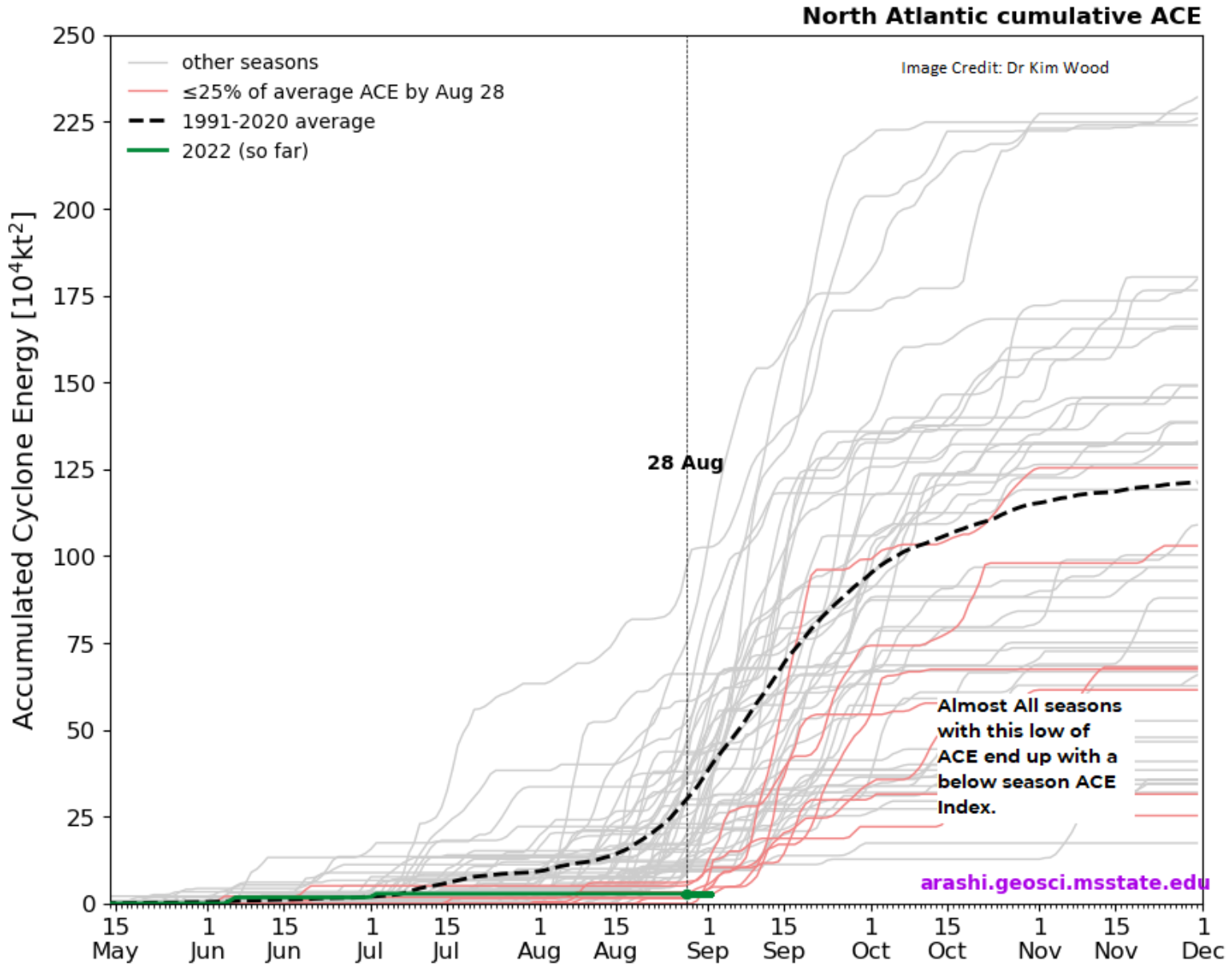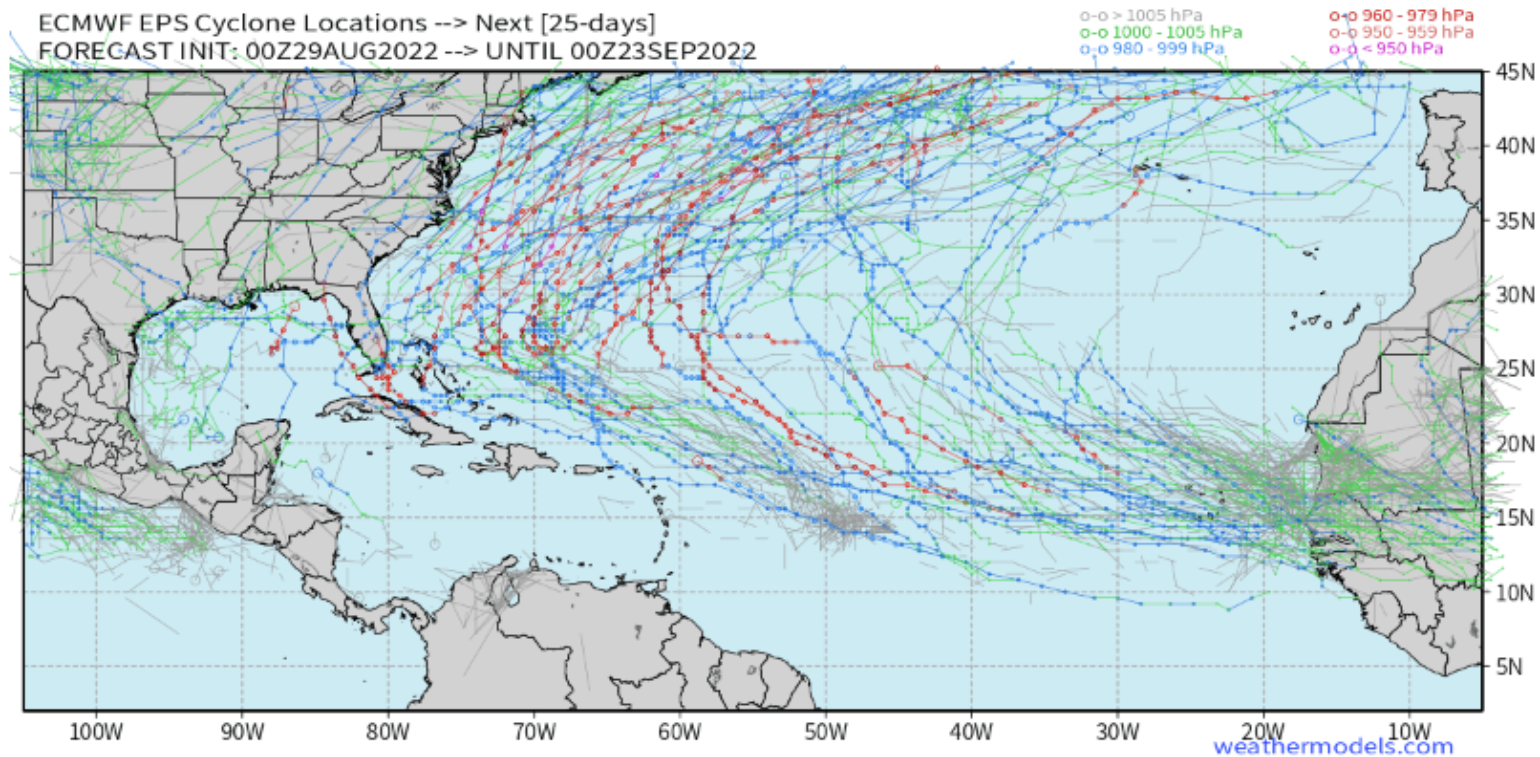Our last BMS Re Tropical Update was on the lack of news surrounding good extremes. We highlighted how limited the media attention has been regarding the global tropics and how quiet it has been with named storms counts, hurricanes, and typhoons worldwide. There was nothing of note in July and August, which is undoubtedly a big surprise given the very active forecast that started the year for the Atlantic Basin. This BMS Re Insight will not focus on this lack of activity, which is now turning into a significant news item. Instead, it will focus on what can be expected for the peak of the Atlantic hurricane season that occurs on September 10th.

If you have been watching the NHC website, you will have noticed that it has come alive with several areas of interest over the last week. This is all part of a large-scale pattern that travels the globe and entered the Atlantic Basin around August 25th. This pattern allows for conditions that can enhance tropical convection. However, as discussed in previous posts, named storm development is a puzzle, and several variables must come together simultaneously to aid in named storm formation.
At this time of year, much of the Atlantic basin can support a major hurricane under the right environmental conditions as Sea Surface Temperatures (SST) are well plenty warm enough. Overall, wind shear has been mostly favorable, but as of late, it has increased due to a climate forcer called a Tropical Upper Tropospheric Trough (TUTT). Sometimes the TUTT results in a large amount of vertical wind shear over tropical disturbances in the deep tropics and cyclones and thus hinders their development. The other climate forcer hampering activity this season has been dry air at mid and upper parts of the atmosphere, which is the primary cause of the lack of activity in the basin.
According to a study released in 2020 by Sunders et. al., Quantifying the Probability and Causes of the Surprisingly Active 2018 North Atlantic Hurricane Season, even perfect sea surface temperature and wind shear during peak Atlantic hurricane season only explains 50% to 60% of the variance in overall Atlantic activity. This is the challenge of forecasting weather events on climate timescales. In fact, this year is the perfect example of this obstacle, considering the hype and what the climate forcers were predicting back in April and May. Hardly any forecasts predicted this near record quietness to start the season.

This is the first time since 1941 that the Atlantic has had no named storms between July 3rd and August 30th. In addition, this is the first August without a named storm since 1997, and the 7th August without a hurricane dating back to 1950 (1967, 1984, 1988, 2001, 2002, 2013). This is favorable news, and the media is beginning to report about the lack of tropical activity across the basin. Furthermore, the insurance industry has not seen any significant losses from named storm activity in the U.S., which is excellent news considering the ongoing capacity and regulatory issues impacting many property insurers. Since 1995, the insurance industry has typically experiences 49% of the total insured loss before September 1. Suppose you push that out to the middle of September. The percentage changes to 79% of the total loss. Therefore, we are clearly in the period climatological that historically experiences the most U.S. insurance industry loss.
Although the near record lack of activity could end with a new named storm developing out of any of the systems the NHC is watching including Tropical Depression 5. The one area that looks like it might have any U.S. impact is invest 91L East of the Leeward Islands. The NHC is giving it an 80% chance of development over the next five days during the U.S. Labor day long weekend, which historically has been notorious for providing job security to the catastrophe modeling industry supporting the insurance industry. So, this U.S. Labor Day weekend will be a nice break from laboring as the global forecast models so far keep any potential tropical systems away from the U.S. coastline. The next named storm will be Danielle. The name alone shows further evidence of the lack of activity this season - based on climatology, the basin should be on storm H or I.
Looking Ahead
Overall, there does not appear to be any landfall threat through the peak of the hurricane season and into the middle of September, which would continue the good news for the insurance industry. So the question is, what are the chances of seeing an above-active season or even a landfall?
Dr. Kim Wood, an assistant professor at Mississippi State, recently shared a plot showing Atlantic cumulative ACE as of August 28th. There has not been any accumulation of ACE since, and as you can see from the plot, we are now in the realm of the Atlantic basin likely experiencing a below-normal season. Accordingly, unless there is some unforeseen hyperactivity at the end of September into October, it is likely that the Atlantic ACE and the named storm count will be average to below average. The plot also shows that even after September 15th, the chances of the season having rapid ace development are rare.


In terms of U.S. landfalls, there was a lot of media attention around the recent 30th anniversary of Hurricane Andrew. The major takeaway is that even in a down year, an extremely memorable hurricane impact can occur. However, the chances of a year like 2013, where no one remembers the strongest storm of that season, Humberto, off the African coastline, are increasing. Another factor to consider is La Niña. It has been one of the strongest La Niña seasons since 2010, which is typically associated with heavy activity in the second half of the season.
As we move into later September, less attention is on the Main Development Region (MDR), and the focus will shift towards tropical systems that can develop and quickly ramp up in the Gulf of Mexico and the Western Caribbean. We have had several named storm impacts in recent years into October. The chances of fewer overall U.S. impacts decrease with the lack of storm activity. However, the insurance industry cannot let its guard down as Mother Nature holds the cards and could quickly put the insurance industry into crisis mode with long significant loss events. Anything could still happen at the tail end of the season.
